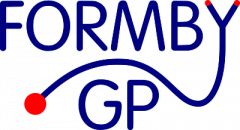Autumn term is well underway and talk at the school gates is turning to nits (or rather head lice – nits being their eggs). Many parents feel itchy as soon as they receive the first WhatsApp message about them, whether or not they or their child are affected!
Did you know…
1. The most reliable way of detecting head lice is by using a nit comb. A 2008 study showed that “detection combing” is almost four times more effective than just looking at your child’s scalp.
2. Old eggs can remain glued to the hair for up to 6 months, even after successful treatment has eradicated the head lice – so experts advise that you only treat your child if you see a living, moving louse.
3. There is no evidence that head lice prefer clean hair, despite the urban myths.
4. Head lice are more common in girls than boys, and the peak age for infestation is around 7-8 years.
5. Many parents use essential oils such as tea tree oil to repel nits. However, there is no good evidence that this works (but your child will smell nice!).
6. The use of other treatments to prevent nits is controversial. One trial in 2014 showed that 1% 1,2-octanediol spray (which is sold as Hedrin Protect & Go Spray) gave a significant amount of protection from head louse infestation – though it did not always prevent it. However, the official NHS website advises against using chemical sprays regularly to prevent nits in case they irritate the scalp. For what it’s worth, in the 2014 trial, very few children had any problem with the spray, and so we (Heather and John) do choose to use it on our children.
7. If your child has a confirmed head louse infestation, there are various methods you can use to treat it. Evidence suggests that mechanical removal of lice (e.g. by wet-combing with a nit comb) is less effective than chemical methods. However, some parents prefer to try a chemical-free option first, using kits like “BugBuster” or the “NittyGritty” comb.
8. Agents such as dimethicone and cyclomethicone have been shown to be highly effective in clinical trials. Rather than being conventional insecticides, these chemicals work by suffocating the lice or by damaging their skeleton. These treatments are great because, unlike traditional insecticides, head lice can’t develop resistance. Treatments available over the counter include Full Marks Solution and Hedrin 4% dimeticone lotion.
9. There is growing concern that head lice are developing resistance to insecticide treatments such as malathion and permethrin, so we would not recommend them. Make sure you read the label or speak to the pharmacist so you understand what you are buying.
10. Experts suggest that there is no need to use a course of head louse treatment on your child because there are cases of lice at school – the advice is to use a nit comb to check the hair and treat only if you find a live louse.
11. Although head lice are unpleasant and cause itching, they almost never cause serious health problems. If your child gets nits, don’t panic!
I hope this has been helpful. Here are some helpful links and references:
https://www.nhsggc.org.uk/…/stafford-head-lice-2012.pdf
https://bmjopen.bmj.com/content/4/5/e004634
https://pubmed.ncbi.nlm.nih.gov/10937452/
https://www.nhs.uk/conditions/head-lice-and-nits/

